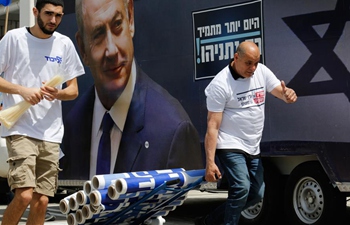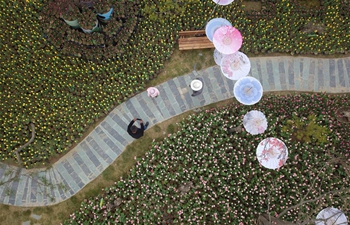by Xinhua writer Shi Xiaomeng
BEIJING, April 9 (Xinhua) -- It is springtime in China and Europe, and there is also a new spring in the steps of China-Europe interaction.
Just weeks after Chinese President Xi Jinping's state visits to France, Monaco and Italy last month, Chinese Premier Li Keqiang is now in Europe for his first overseas trip this year, during which he is to attend a series of high-level meetings in Belgium and Croatia to further cement China's cooperation with the continent.
The almost back-to-back visits by Chinese leaders are sending out an unmistakable message to their European counterparts that Beijing sees in Europe an important partner for cooperation.
The momentum for building a stronger partnership with China is also building up in major European capitals.
During Xi's visit last month, Italy became the first Group of Seven member to join the China-proposed Belt and Road Initiative (BRI), which intends to facilitate better infrastructure connectivity, promote faster trade transactions, build up more convenient financing channels, and foster stronger people-to-people exchanges among countries along the ancient trade route and beyond for common development.
Other major European powers have also expressed their willingness to step up BRI cooperation with China.
London said it seeks to explore the Belt and Road construction with Beijing. Berlin wants to play an active part in the BRI and Paris believes the EU could align its development strategy with the initiative in an innovative way and jointly promote Eurasian connectivity.
Beijing has been a consistent supporter for Europe's integration process. While it is pursuing equal and mutually beneficial cooperation with every European country, it also seeks to promote the overall strategic partnership with the EU by operating various dialogue mechanisms with the regional bloc, like the annual China-EU summit.
China and Europe are two of major engines for global economic growth. The two also face similar tasks to spur domestic development, and have no fundamental conflict of interests. In some areas, they are an apparent partner to each other. The expanding trade volume and fruitful BRI cooperation are fine examples.
The latest statistics show that China-EU trade hit a record high of 682.2 billion U.S. dollars last year, up by 10.6 percent year on year. BRI-related programs like the China Railway Express, which transports merchandise between 59 Chinese cities and 50 cities in 15 European countries, have played a key role in driving up such a vibrant trade relationship between Europe and China.
Moreover, China has recently launched a series of reform and opening-up measures to facilitate high-quality development, broaden market access, level the business playing field and step up the protection of intellectual property rights. For European countries, which share similar tasks to spur development, these steps will bring about new round of chances and more dividends.
Another key reason for a stronger China-EU partnership has more strategic implications.
As globalization enters a new stage, countries are becoming more interconnected in face of new global challenges like climate change, terrorism and trans-national crimes. No country is an island. Solving these problems requires a joint input from China and Europe. The two sides also share broad interests in maintaining a rules-based international trading system, and promoting multilateralism in accordance with the principles in the UN Charter.
Cooperation and competition always go hand in hand. Fair market competition helps stimulate growth and makes China-Europe cooperation healthier and more resilient. The two sides need to work towards a better market environment to facilitate cooperative competition, and highlight cooperation as the keynote of China-Europe relations.
Spring is the season of sowing. As Chinese and European leaders are gathering to plant the seeds of a stronger future relationship, the harvest of cooperation will be much rewarding.















